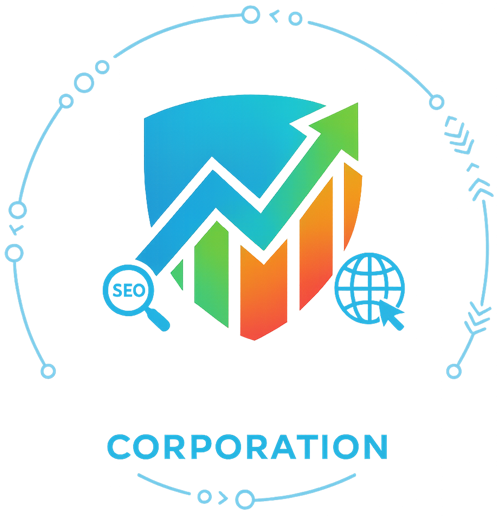
Search Engine Optimization (SEO) has always been about making your content discoverable, relevant, and authoritative in the eyes of both users and search engines. Over time, SEO has evolved—from keyword stuffing and link building to more sophisticated content, user signals, technical performance, and semantic relevance.
In recent years, Artificial Intelligence (AI), especially with advances in natural language processing (NLP) and machine learning (ML), has begun to significantly reshape how content is researched, created, optimized, and maintained. AI is not just automating repetitive tasks but also aiding strategic decisions, improving accuracy, anticipating trends, and helping with more nuanced, context-aware content.
In this post, we’ll explore how AI is transforming content creation in SEO strategies—what it enables, what the risks are, how to use it well, and what the future might hold.
- The Changing Landscape of SEO Content
Before diving into AI, we should understand the context: what is changing in SEO that makes AI more valuable now.
- Search engines (like Google) have grown more sophisticated in evaluating content: not just keywords, but search intent, semantics, user experience, E-E-A-T (Experience, Expertise, Authoritativeness, Trust), content freshness, and many other signals.
- Users expect more personalized, relevant, high value content; they want answers quickly, comprehensively, clearly.
- The volume of content online has exploded. To compete, brands need to produce content more frequently, across more channels, formats, and sometimes languages.
- The cost (time, manpower) of high quality content is high. Scaling is expensive.
- New search phenomena: voice search, AI overviews/meta summarizations, zero-click searches, generative search, etc., are shifting how content needs to be structured.
Given all that, content creation isn’t just about writing; it’s about strategy, speed, insights, format, optimization. This is where AI becomes a game changer.
- What AI Brings to Content Creation
Here are the main capabilities that AI contributes, and how they affect SEO content.
3.1 Automation & Efficiency
AI can automate many repetitive, labour-intensive tasks:
- Generating initial drafts: blog sections, product descriptions, meta descriptions, FAQs, etc.
- Automating on-page optimization: inserting or suggesting keywords, generating meta tags, alt texts.
- Automating technical audits (broken links, site structure, page speed).
This saves human time and allows teams to focus on higher-value tasks like strategy, storytelling, brand voice.
3.2 Data-Driven Insight & Analytics
AI tools can process large volumes of data quickly: search volumes, click-through rates, competitor content, ranking histories, user behavior.
With this, AI can:
- Suggest keyword opportunities (e.g. long-tail, low competition, trending topics).
- Highlight content gaps: what competitors are doing that you’re not.
- Predict trends: what topics are likely to rise or decline.
- Provide metrics for content performance: engagement, bounce, dwell time, etc., and feed that back into content optimization.
3.3 Understanding Search Intent & User Behavior
Modern AI is good at not just seeing what people search, but inferring why they’re searching. Are they:
- Looking for information (how-to, definitions, guides)?
- Trying to buy something (transactional)?
- Looking for reviews/comparisons?
- Searching locally?
Matching content to intent is essential for SEO success. AI helps by classifying queries, suggesting content types/formats, structuring content accordingly.
3.4 Semantic Understanding & NLP
Semantic relevance means including related terms, synonyms, understanding topical breadth, not just exact keyword matches. AI NLP capabilities help in:
- Parsing large corpora to find semantic keyword clusters.
- Generating content that uses related terms naturally.
- Understanding context, entities, user queries.
Search engines increasingly use semantic analysis (e.g. BERT, MUM, etc.), so content that covers topics holistically and coherently tends to rank better.
3.5 Personalization & User Experience
AI allows content to be personalized or tailored:
- Dynamically showing content depending on user type or segment.
- Adapting tone/style based on audience.
- Optimizing for display (mobile, voice, etc.).
Better UX (mobile friendliness, speed, readability) is also a ranking factor, and AI tools often help optimize those.
3.6 Scaling & Consistency
Consistency in content style, voice, quality, frequency is hard with large teams. AI tools help maintain tone/voice templates, ensure SEO best practices are followed, keep publishing schedules without burnout.
This enables scaling: more content, more topics, more languages, across channels.
- Where AI Fits in Different Parts of the SEO Content Workflow
Let’s map AI’s role at each stage of content creation & SEO strategy.
| Stage | Traditional Approach | How AI Enhances / Transforms |
| Ideation & Topic Research | Brainstorming, competitor research manually, gut feeling, keyword tools. | AI can suggest topics based on trending queries, content gap analysis, keyword clusters; can analyze what competitors do and what users are asking (e.g. via forums, Q&A). |
| Keyword Research & Clustering | Using keyword tools, spreadsheets, human evaluation. | AI can process huge datasets, cluster keywords by intent/semantics, predict difficulty & opportunity, suggest long-tails, consider voice search, regional/language differences. |
| Outlines & Structuring | Writer makes an outline manually. | AI can propose optimized outlines by analyzing top ranking pages, predict sections users want, suggest headings, FAQ sections, schema markup. |
| Draft Writing | Human writer writes from scratch or from outline. | AI can generate first drafts, suggest paragraphs, suggestions for content blocks; reduce writer’s block. |
| Content Optimization | Manual SEO adjustments: keyword density, meta tags, linking, on-page structure, readability. | AI tools can suggest on-page tweaks, analyze readability, optimize headings, optimize meta titles/descriptions, internal linking suggestions. |
| Multimedia & Supplementary Assets | Humans create images, infographics; manual choice of relevant media. | AI helps generate image suggestions, create visuals from prompts, compose video scripts; suggest alt text, compress images, optimize for load time. |
| Editing, Proofreading & Human Touch | Human editor checks quality, style, facts. | AI can assist grammar/spell checkers, style consistency tools; but human oversight remains crucial for veracity, nuance, personalization, brand voice. |
| Publication, Monitoring & Iteration | Publish posts, monitor metrics manually, adjust strategy periodically. | AI can monitor content performance in real time, suggest updates, A/B testing, refresh content, identify decay in traffic, repurpose content. |
- Tools & Platforms: What’s Available Now
Many tools already combine AI + SEO functionality. Some focus more on content generation, others on optimization, some on analytics. (Below are illustrative; landscape evolving fast.)
- SurferSEO – helps optimize content structure, keyword use relative to what top ranking pages do.
- Clearscope – semantic content optimization, keyword relevance, readability etc.
- MarketMuse – analyzes topic coverage, suggests content gaps, helps build content briefs.
- Frase – for content briefs, optimizing to search intent, FAQ integration.
- Ahrefs Labs/Keywords Explorer – increasingly using AI for keyword discovery, trend prediction.
- SEMrush – has AI writing assistants, on-page optimization suggestions.
- Grammarly / Hemingway / ProWritingAid – while not fully SEO tools, they help with clarity, grammar, readability.
- Adaptify SEO – as per case studies, helps automate manual tasks and scale SEO content strategy.
- Benefits of Using AI in SEO Content Creation
Putting together what was discussed, here are the key advantages:
- Speed & Volume: You can produce content faster—initial drafts, outlines, or even full posts—enabling higher content frequency.
- Cost Efficiency: Lower cost per content piece, especially for tasks that don’t require deep subject matter expertise (or as much human time).
- Better Keyword Discovery & SEO Coverage: AI helps uncover hidden long-tail keywords, gaps in competitors’ content, new topic clusters.
- Improved Relevance & Intent Matching: AI can help ensure content aligns with what users are really searching for.
- Consistency in Voice & Style: Especially for brands with lots of content and multiple writers, maintaining coherence is easier.
- Optimization & Fine-Tuning: AI tools can suggest improvements in readability, structure, meta data etc that might be tedious to do manually.
- Scalability: Multi-language, multi-topic, republishing or refreshing old content becomes more manageable.
- Risks, Challenges & Ethical Considerations
While AI offers many benefits, there are real risks and challenges. Used poorly, AI can hurt your SEO instead of helping.
- Quality & Originality Concerns
- AI tends to generate generic content if prompts are weak. There can be “cookie-cutter” style content.
- Risk of plagiarism or content that is overly similar to existing content.
- E-E-A-T & Trust Issues
- Google puts emphasis on Experience, Expertise, Authoritativeness, Trust. AI lacks lived experience and unique insights; content may appear less credible.
- In domains where credibility / accuracy is critical (medical, legal, financial), mistakes or misrepresentations are dangerous.
- Over-Optimization & Penalties
- If content is just written for search engines (too many keywords, thin content), it may be penalized.
- Search engines are increasingly sophisticated at detecting low-quality, AI-generated content done purely for SEO.
- Legal & Copyright Issues
- Using third-party content, or data that AI was trained on could lead to copyright concerns.
- Source attribution and avoiding use of private or proprietary material.
- Bias & Information Accuracy
- AI may produce content with bias, or content that’s outdated or incorrect (“hallucinations”). Fact checking is needed.
- Dependence & Loss of Human Creativity
- Over-relying on AI may lead to a loss of brand voice, tone, unique storytelling.
- Human insight, creativity, nuance, anecdote still matter.
- Cost & Tool Limitations
- High-end AI tools can be expensive.
- Some tools might not support certain languages or regional nuances well.
- Best Practices: How to Use AI Without Hurting SEO
To harness AI effectively, and avoid pitfalls, here are some suggestions / guidelines:
- Start with Clear Strategy & Goals
- Define audience, voice, formats, topics.
- Know what metrics matter (traffic, conversions, dwell time, user engagement).
- Use AI as Assistant, Not Replacement
- Let AI help with drafts, outlines, optimizations; but always inject human input—stories, examples, brand voice, fact checking.
- In editorial process, have humans review, edit, polish.
- Ensure Strong Prompting
- Good prompts = better output. Be specific about tone, format, audience, length, etc.
- Include context: what you want, what you don’t want, and show examples if possible.
- Make Content Unique & Valuable
- Add original research, interviews, first-hand experiences.
- Update content: freshness helps.
- Use multimedia (images, video, infographics) to enrich content.
- Match Search Intent & Structure
- Use AI to understand what users expect when they search a query, then structure content to satisfy that (headers, FAQs, summaries etc.).
- Use schema markup where relevant.
- Optimize Readability & UX
- Break content into digestible sections.
- Use headings, bullets, visuals.
- Ensure mobile friendliness, load speed.
- Monitor, Measure & Iterate
- Track how AI-assisted content performs vs fully human content. Metrics: engagement, bounce rate, dwell time, rankings.
- Refresh content when it decays.
- Stay Ethical & Compliant
- Avoid copying. Use plagiarism checkers.
- Disclose use of AI if required by regulation or ethical guidelines.
- Be careful with sensitive topics.
- Case Studies & Examples
Here are some real-world examples of how AI has been used to transform SEO content, along with outcomes.
- Adaptify SEO: According to their case studies, agencies have used Adaptify to automate many manual parts of content strategy and SEO tasks, scaling content output and improving traffic. Example: some clients saw 173% traffic growth by automating content creation and focusing on high-authority backlinks.
- Wix: Wix has rolled out AI tools that generate entire SEO-optimized blog posts, including suggesting topics, titles, meta data. For users of their AI tools, having blogs led to significantly more organic traffic compared to sites without blogs.
- Various articles/reports show that AI-enabled content can reduce time for content creation, improve consistency, and scale – while many warn about maintaining quality, avoiding spammy content, etc.
- The Future: What’s Next
AI in SEO/content is moving quickly. Here are trends & possible future directions:
- Generative Search & AI Overviews
- Search engines may increasingly generate summaries or overviews of results, reducing reliance on users clicking through. Content will need to be structured so that AI systems can “pick it up” for these summaries.
- More Natural Language / Conversational Search
- Voice, smart assistants, chat-based searches becoming more common. Content optimized for conversational queries, question-answer format, etc.
- Greater Emphasis on Experience & Expertise
- E-E-A-T will matter more. AI tools might help surface credentials, author-profiles, reviews, original content, to build trust.
- AI Tools that Integrate Multiple Signals
- Tools that combine content performance, user behavior, voice search signals, image/video search, etc., to give richer optimization guidance.
- Real-Time/Adaptive Content
- Content that updates itself or adapts based on user feedback, engagement, or changes in search trends. E.g. automatically adjusting content when a topic’s popularity spikes or fades.
- Ethical, Regulatory & Quality Standards
- As concerns rise (misinformation, plagiarism, bias), regulation or industry standards may emerge demanding disclosure, auditing, etc.
- Multilingual & Local SEO Powered by AI
- AI translation/localization improving. More content that is geo / culturally tailored.
- Integration with Other Tech
- AI + AR/VR, video, voice assistants; maybe AI automatically generating video or audio summaries of content.
- Conclusion
AI is transforming content creation in SEO strategies in powerful ways. It brings speed, efficiency, data-driven insights, scaling, and helps align content more closely with user intent. Yet it is not a magic wand: using AI poorly can result in generic, low-value content that damages trust or rankings.
The key is balance: using AI as a tool to support strategy, not replace human judgment; maintaining high standards of quality, originality, and relevance; continuously measuring, iterating, and improving.
For those organizations and creators who get it right, AI can provide a competitive edge—faster content production, better optimization, more engagement, and ultimately, improved search visibility and business results.





